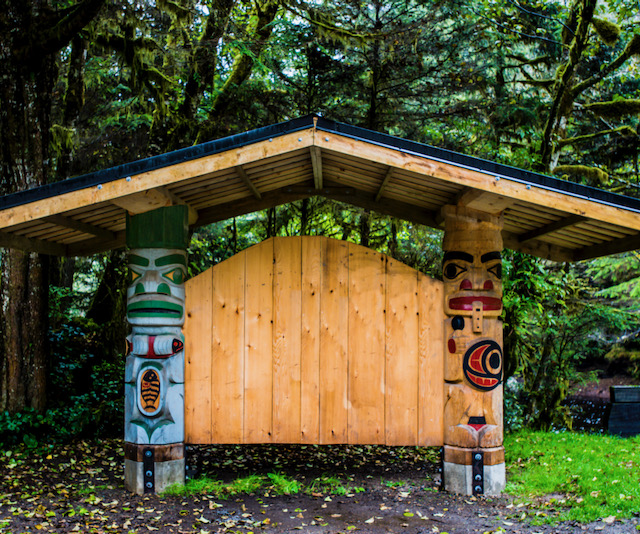Abstract
Indigenous Peoples’ lives, cultures, and values are defined largely by their long-term relationships with the lands, waters, and lifeforms of their territories. Their stories, names, ceremonies, and connections with the plants and animals on which they have depended over countless generations are cornerstones of their knowledge systems, systems of governance and decision-making, traditions of intergenerational knowledge transmission, and values and responsibilities associated with natural and human domains alike. For First Nations of North America’s Northwest Coast, as for many other Indigenous Peoples, the arrival of European newcomers disrupted both the natural world and associated cultural practices in interconnected ways. The industrial exploitation of lands and resources had wide-ranging effects: traditional land and resource appropriation; impacts on culturally significant habitats by industrial-scale fishing, logging, and mining; and discrimination and marginalization contributing to resource alienation. This paper documents some experiences of Kwakwaka’wakw and other Coastal First Nations in coping with the cultural effects of environmental loss. It highlights their concern for the ecological integrity of lands and waters formerly under their stewardship but reshaped by non-Native extractive economies, and describes how these losses have affected the cultural, social, and physical health of Kwakwaka’wakw peoples up to the present time.
Introduction
“Hillatussella [the Transformer]…came from the north. He came to xwessam [Kelsey Bay, northeastern Vancouver Island]. He saw ladies taking t’əxwsús [springbank clover rhizomes] on the flats. And they couldn’t see, these ladies [for they were blind]. And the other lady said, sniffing… ‘It smells like Q’aniqilakw [the Transformer1]’…these ladies digging t’əxwsús [said]… He said to them, … ‘Are you all blind?’ And one lady said, ‘Yes, we can’t see, but we can smell and feel.’ And he said, ‘Come over here where I’m standing.’ And they said, ‘We can smell you.’ So he grabbed these ladies and made mallards out of them. He turned them into mallards. And that’s why these mallards like to have t’əxwsús! That’s what they look for on the [tidal] flats. Yeah, he turned them into a mallard [duck]… lhalhk’uw, we call it. And you see, they’re all digging around the flats, for t’əxwsús” (Kwakwaka’wakw story told by clan Chief Adam Dick, Kwaxsistalla, December 2001).
The oral traditions of Northwest Coast Indigenous Peoples, such as the story recounted above, bind the people to their resident places, embodying their long-term relationships with the lands, waters, and lifeforms of their home environments. Ancestral names, such as Kwaxsistalla, reflect ties to people’s traditional territories and to their cultural and ecological heritage. Kwaxsistalla is the Kwak’wala name bestowed upon Adam Dick as part of his hereditary chieftainship of the Dzawada’enuxw (Tsawataineuk) people of Kingcome Inlet (Gwa’yi village). Adam Dick’s grandfather and great grandfather held the name Kwaxsistalla, as did a long chiefly line before them. As Adam explained in 1998, “Oh, there used to be hundreds of Kwaxsistalla’s before they gave me that name.”


